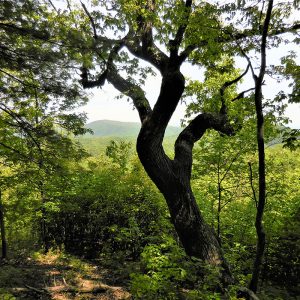
The Grimm Brothers’ Worst Nightmare: Wolves Thriving in Germany
03/01/2020
Repairing the Past, Defending the Future
05/04/2020The theme for the 2020 annual conference of the Appalachian Studies Association was “Appalachian Understories.” Conference announcements cited, somewhat vaguely, the “Mother Forest.” This was nice to see because the globally unique Southern Appalachian forests don’t receive much recognition, especially the world-class national forest commons. Yet these nearly contiguous six million acres of Appalachian national forests, regrowing after historically horrific logging, are the region’s best hope against climate change. My talk plays with both “Understories” and “Mother Forest” to describe how our forests could save us, if we could save them.
I was invited to be on the Global Climate Commons Panel at the 2020 annual meeting of the Appalachian Studies Association in Lexington, KY. By the time the meeting was cancelled due to covid-19, I’d already prepared this Powerpoint, which James Madison University then kindly taped.


